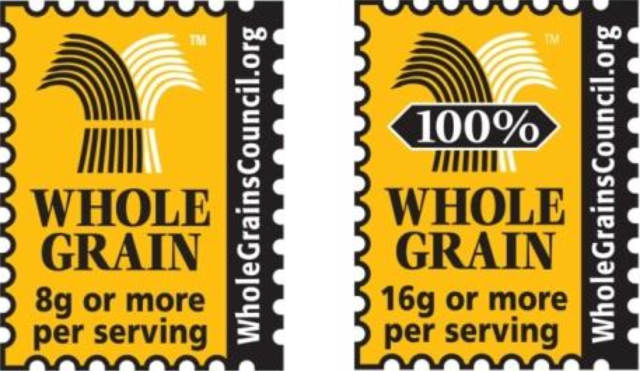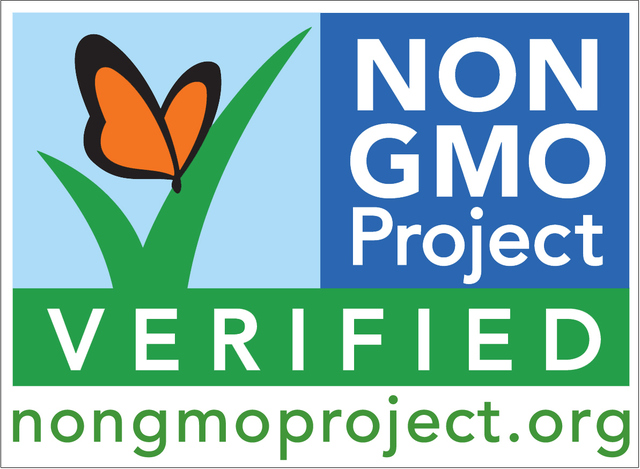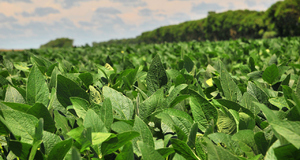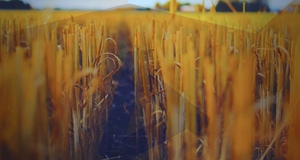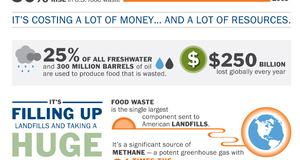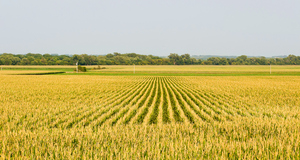From Discussions VOL. 10 NO. 3Important Distinctions Between Labels and Certifications and Why They MatterWhole Grain & Multi-GrainOther highly prevalent labels consumers may see are the whole grain and multi-grain labels. While these labels are not regulated, the FDA does provide guidance on their use. Another organization, the not-for-profit Whole Grains Council, provides more oversight for whole grain labeling. The Whole Grains Council created the Whole Grain Stamp (Fig. 9), helping busy shoppers spot the difference between regular and whole grain bread. This label is now found on over 8,600 products in 41 countries (About Us). Whole grain and multi-grain labels are seen on grain-based products such as cereals, breads, and snacks. The Whole Grains Council defines whole grain as containing all the essential parts and naturally-occurring nutrients of the entire grain seed in their original proportions – that is, whole grain must contain 100% of the original kernels – while there exists no official definition for the term “multi-grain.” However, since both of these terms are not regulated and there are no legal consequences for their misuse, there are not clear standards for what constitutes whole grain or multi-grain (Definition of Whole Grains). The ambiguity surrounding the whole grain and multi-grain labels has led some to question their validity. One such group, the Center for Science in the Public Interest (CSPA), is a nutrition watchdog group that has petitioned the FDA about the whole grain label. The CSPA claims that some labeled products are not actually made with whole grain and wants companies to be required by law to disclose what percentage of a given product is whole grain. This begs the question: if these companies are not using whole grain, then what are they using? According to the executive director of the CSPI, Michael Jacobson, “[Companies] add caramel coloring (Leamy).” And when asked about multi-grain, he said, “The only thing [“multigrain”] means is that [the product] has more than one grain. It doesn’t mean any of them are healthful (Leamy).” Thus, “multi-grain” could just mean refined flour and not whole grains (Leamy). Clearly, the whole grain and multigrain labels are ones of which consumers should be wary. All Natural (No Official Logo)Another, less-ambiguous label is “all natural” – although, like whole grain, there is no official government standard for what the label means for most products. Despite this lack of a formal definition, however, in 1993, the FDA released a statement saying the agency does “not [object] to the use of the term on food labels provided it is used in a manner that is truthful and not misleading and the product does not contain added color, artificial flavors, or synthetic substances” (Heller). Furthermore, the FDA said in the statement that, with the exception of “natural flavors,” the term “natural” is not permitted in the ingredient list (Heller). For some products, though, the use of the term “natural” is regulated. The USDA has requirements for the labeling of meat, poultry, and egg products as “natural (Heller).” According to the USDA, these products must be minimally processed and must not contain any artificial ingredients. However, the “natural” label does not include any standards regarding farm practices and only applies to the processing of meat and egg products. So, while the “all natural” label is certainly less dubious for certain products compared to the whole grain and multi-grain labels, it is still one consumers should be wary of in the grocery store. Eggs: Cage-Free, Pasture-Raised, & Range-Free (no official label)When shopping for eggs, consumers are likely to see several different labels, such as cage-free, pasture-raised, and range-free. The free-range certification indicates that the chicken was provided shelter in a building, room, or area with unlimited access to food, fresh water, and the outdoors during its production cycle. However, the outdoor area may or may not be fenced in and/or covered with netting-like material. This label is minimally regulated by the USDA, as no criteria exists for the size, duration, or quality of outdoor access that must be provided (Agricultural Marketing Service – Consumers). Furthermore, there is no restriction on forced molting via starvation. When forced into molting, the hens are unfed for a week or two, during which time production stops to allow the hens’ reproductive tracts to rejuvenate. Another practice, beak cutting, where the beak is partially trimmed to reduce feather pecking and cannibalism, decrease mortality rates, and increase production, is also allowed. Ethical problems arise from this practice, as a hen’s ability to consume feed is impaired by pain and stress. Beak cutting and forced molting are major concerns for animal activists like the Humane Society (How to Read Egg Carton Labels). The unregulated cage-free label means that the flock was able to freely roam a building, room, or enclosed area with unlimited access to food and fresh water during their production cycle (Agricultural Marketing Service- Consumers). They generally do not have access to the outdoors, and again, beak cutting is permitted. Although the label cage-free sounds pleasant enough, it is rather meaningless, as producers may grow their poultry in such cramped conditions that the difference between a cage and an overcrowded pen is irrelevant (see Fig. 10). Finally, the also-unregulated “pasture-raised” label means that the hens spend their days outside on fresh pastures. However, due to the number of variables involved in pasture-based agricultural systems, the USDA has not developed a federal definition for pasture-raised products (Agricultural Marketing Service-Consumers). Of the three labels, only “free-range” is regulated by the USDA, while there are still no third-party auditors to confirm whether farmers are meeting requirements. Thus, consumers should be wary of labels on eggs as well. Beef: Grass-Fed, Organic, & Conventional Feed-Lot (no official label)Like eggs, beef can also be found with a multitude of different labels attached. Grass-fed is good alternative to CAFO’s, but due to the lack of regulation of harmful substances in grass-fed beef, it falls second to organic beef. The grass-fed certification does not limit the use of antibiotics, hormones, or pesticides. Grass-fed animals receive a majority of their nutrients from grass throughout their life, while organic animals’ pasture diet may be supplemented with grain. Although cattle raised mainly on grass tend to be more nutritious, because grass fed cattle are allowed harmful antibiotics, to be discussed later, the superiority between the two certifications is hard to determine. If considering the stringent process of receiving the organic certification, the scale is slightly tilted in favor of organic. Beef labeled as organic must meet a slew of requirements. Louis Rorimer, owner of Snake Hill Farm, a certified organic farm in Bainbridge, Ohio, describes the various requirements to raise organic beef: “Organic beef must meet … a 100% organic diet, medication restrictions and requirements, shelter requirements, humane treatment and slaughter, etc. The mother has to be organic, too for the last part of her pregnancy. In addition, it must have year-round access to pasture, and 30% of its diet by “dry matter” weight must consist of pasture during the grazing season. The animal must also be slaughtered and butchered by a certified organic butcher.” Louis describes these rules briefly, not touching upon the various intricacies of the 30% rule. These stringent requirements, along with general organic standards previously described, restrict the scale of the farm. Snake Hill Farm will only produce 7 steer with a target weight of 500 pounds per steer. Understandably given the painstaking nature of the certifying process and the scope restriction of organic beef certification, a premium’s inevitably charged. Hormone- and Antibiotic-Free (no official label)One of the more-regulated labels is “hormone- and antibiotic-free.” According to the FSIS, the allowed usage of hormone and antibiotic differs among poultry, pork and beef. The FSIS states that hormones are not allowed in pork and poultry. Beef, however, is allowed hormones and so can be labeled as “no hormones added.” The label “no antibiotics added” can be put on all meats as all animals are allowed antibiotics (FSIS). These regulations seem solid on paper, but the approval process for these labels is lacking. All farmers have to provide is “sufficient documentation” to the agency to claim these labels, meaning agents fail to inspect the animals rather simply check the paperwork. The lack of due diligence has been noted by the European Union, which stopped importing chicken from the United States in 1997. U.S. poultry go through a pathogen reduction treatment (PRT), a method inactivating infectious pathogens through radiation, a practice that is prohibited in the E.U. Although deemed safe by scientific opinions, the E.U. maintains its industry specific embargo on pathogen reduction treated poultry. (U.S. Congressional Research Services). Non-GMOFinally, the Non-GMO label (Fig. 11) is certified by a non-profit organization unaffiliated with the government called The Non-GMO Project. The Non-GMO Project began as an initiative of independent natural foods retailers who were interested in providing consumers with more information regarding risks of GMOs, which were described earlier. However, the organization sadly has no legal authority in the regulation of GMO products. Despite having no legal authority, the Non-GMO Project has done a competent job in labeling. They require ongoing testing of all at-risk ingredients meaning any ingredients used cannot be above a threshold of 0.9%, a standard picked up from the European Union. After the test, rigorous traceability and segregation practices are administered in order to ensure ingredient integrity through to the finished product. For an added measure, verification is maintained through an annual audit, along with onsite inspections for high-risk products. The Non-GMO Projects strives to one day rid all products labeled Non-GMO of any trace amounts of GMO. And to aid achieve this, they make sure the goals of the participant’s quality management systems are aligned. (The “Non-GMO Project Verified” Seal) On one hand, we have the production limitations of sustainable growing methods like organic, but on the other hand we see detrimental health effects of conventional methods like CAFO’s. Choosing one method wholeheartedly is an impossible task, at least currently. Choosing sustainable methods will lead to supply shortages and choosing methods like CAFO’s will inevitably lead to health epidemics. Since unhealthy growing methods are going to be part of our foreseeable future, consumers should be knowledgeable about which products are healthful and others harmful, which labels carry meaning and others simply a means to a premium. And to that goal this article has touched briefly on the controversy that is food labeling and certification. AuthorA graduate with a B.S. in Accounting and Management, Inho Choi is on track to become a CPA. Although unrelated to his coursework, Inho has always taken an interest in food and holistic medicine. His interests in these topics have inspired him to discover the truth behind the many labels and food certifications. In his free time he likes to look into nutrition and health and hopes for a brighter future for food and medicine. AcknowledgementsI would like to thank Professor Mary Holmes not only for her instrumental guidance on this paper but also for her work in the world of food and farming. References11.3.09 discharge 16. (2009, November 03). Retrieved June 20, 2014, from http://www.flickr.com/photos/52481464%40N04/4936276632/in/photostream/ “About FDA.” What Does FDA Regulate? N.p., 23 Apr. 2014. Web. 30 Apr. 2014. “About Us.” The Whole Grains Council. N.p., n.d. Web. 30 Apr. 2014. “Agricultural Marketing Service - Consumers.” Agricultural Marketing Service - Consumers. N.p., n.d. Web. 30 Apr. 2014. “Agricultural Marketing Service - Organic Labeling.” Agricultural Marketing Service - Organic Labeling. N.p., 12 May 2012. Web. 15 Apr. 2014. Ascherio A, Katan MB, Zock PL, Stampfer MJ, Willett WCN Engl J Med. 1999 Jun 24; 340(25):1994-8. Charles, D. (2013, January 27). What The Rise Of Cage-Free Eggs Means For Chickens. Retrieved from http://www.npr.org/blogs/thesalt/2013/06/27/195639341/what-the-rise-of-cage-free-eggs-meansfor-chickens Conley, Mikaela. “Antibiotic-Resistant MRSA in Livestock May Spread to Humans.” ABC News. ABC News Network, 21 Feb. 2012. Web. 30 Apr. 2014. “Definition of Whole Grains.” The Whole Grains Council. N.p., n.d. Web. 30 Apr. 2014. “Demographics.” EPA. Environmental Protection Agency, 15 Apr. 2013. Web. 30 Apr. 2014. Dimitri, C. (2005, June). USDA ERS - The 20th Century Transformation of U.S. Agriculture and Farm Policy. Retrieved June 20, 2014, from http://www.ers.usda.gov/publications/eib-economicinformation-bulletin/eib3.aspx#.U6TxwfldWbg Fact Sheet: CAFOs - What To Expect When EPA Inspects Your Livestock Operation. (2003, May). Retrieved from http://www.epa.gov/oecaagct/factsheets/epa-305-f-03-009ag.html “Food.” DRAFT Guidance for Industry: Ingredients Declared as Evaporated Cane Juice; Draft Guidance. Food and Drug Administration, Oct. 2009. Web. 08 May 2014. “FSIS.” About Us. N.p., 29 Apr. 2014. Web. 30 Apr. 2014. http://www.fsis.usda.gov/wps/portal/informational/aboutfsis>. “FSIS.” Meat and Poultry Labeling Terms. N.p., 9 Aug. 2013. Web. 30 Apr. 2014. “GMO Facts.” The NonGMO Project RSS. N.p., n.d. Web. 25 Apr. 2014 “Health Benefits of Grass-Fed Products.” Eat Wild. N.p., n.d. Web. 30 Apr. 2014. Heller, Lorraine. “’Natural’ Will Remain Undefined, Says FDA.” FoodNavigator-USA.com. N.p., 4 Jan. 2008. Web. 30 Apr. 2014. “How to Read Egg Carton Labels : The Humane Society of the United States.” RSS. The Human Society, 10 Apr. 2013. Web. 30 Apr. 2014. Jia Shirong, Jin Wujun. International Debate on Biosafety of Genetically Modified Crops:Scientific Review on Several Cases of Debate. CBA:367708. Leamy, Elisabeth. “Companies Not Telling the Whole Truth About Whole Grains.” ABC News. ABC News Network, 07 Feb. 2012. Web. 30 Apr. 2014. Lopez, A. (2007, July 30). BOUNDARY LAYER HALOGENS IN COASTAL ANTARCTICA. Retrieved from http://www.sciencemag.org/content/317/5836/348.full “Organic Farming.” EPA. Environmental Protection Agency, 27 June 2012. Web. 20 Apr. 2014. Pimentel, David. ENVIRONMENTAL AND ECONOMIC COSTS OF THE APPLICATION OF PESTICIDES PRIMARILY IN THE UNITED STATES. Thesis. Cornell University, 2003. N.p.: n.p., n.d. Web. 30 Apr. 2014. Purdue University. “Farmers Relying On Herbicide Roundup Lose Some of Its Benefit.” ScienceDaily. ScienceDaily, 16 April 2009. The “Non-GMO Project Verified” Seal. (n.d.). Retrieved June 18, 2014, from http://www.nongmoproject.org/learn-more/understanding-ourseal/ Sanborn, M., K.J. Kerr, L.H. Sanin, D.C. Cole, K.L. Bassil, and C. Vakil. “Abstract.” National Center for Biotechnology Information. U.S. National Library of Medicine, 28 Mar. 0006. Web. 30 Apr. 2014. Simpson, S. (2013, June). Cattle. Retrieved June 20, 2014, from http://www.pinterest.com/pin/546905948468666174/ U.S. Congressional Research Services. U.S.-EU Poultry Dispute. By Renee Johnson. N.p.: n.p., n.d. Web. 30 Apr. 2014. Vakil, Catherine. Cancer Health Effects of Pesticides. Thesis. Queen’s University, 2007. N.p.: College of Family Physicians of Canada, n.d. Web. 30 Apr. 2014. “Water.” EPA. Environmental Protection Agency, 18 Feb. 2014. Web. 5 May 2014. “What Is GMO?” The NonGMO Project RSS. Non-GMO Project, n.d. Web. 30 Apr. 2014. Suggested Reading from Inquiries Journal
Inquiries Journal provides undergraduate and graduate students around the world a platform for the wide dissemination of academic work over a range of core disciplines. Representing the work of students from hundreds of institutions around the globe, Inquiries Journal's large database of academic articles is completely free. Learn more | Blog | Submit Latest in Environmental Studies |

